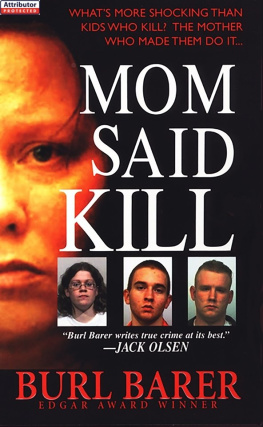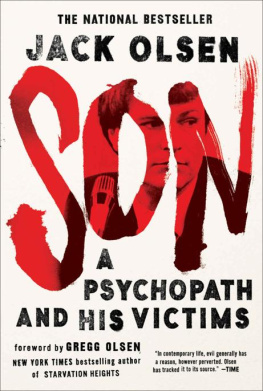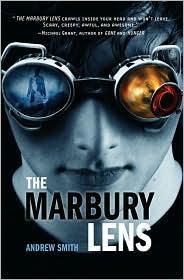ACKNOWLEDGMENTS
This horrific story of homicide, lies, blame, betrayal, beatings, incest, molestation, and madness was adapted from three interrelated cases that implicated three perpetrators in two grisly murders. The criminal proceedings stretched over an entire year, generated over 700 pages of clerks papers, over forty volumes of trial transcripts, and raised a significant issue concerning possible violation of the United States Constitutionan issue ultimately resolved by the Washington State Supreme Court.
Condensing such elaborate and complex events, issues, and interpersonal relationships into a comprehensible narrative would have been impossible were it not for the exemplary cooperation afforded the author by Detective Robert Yerbury of the Tacoma Police Department and others too numerous to mention individually, who appear within these pages. Suffice it to say, the help of the city of Tacoma, the Tacoma Police Department, Travis Webb, the Tacoma School District, the Pierce County Prosecutors Office, the Washington State Supreme Court, the various defense attorneys who, at one time or another, represented the defendants, and the friends and relatives of primary characters is much appreciated. The history of the Tacoma Police Department was provided by the city of Tacoma, and based upon original research by Officer Erik Timothy.
Conversations and statements recounted in this book are adaptations of such as recalled from memory. For purposes of clarity, concision, and continuity, statements, conversations, legal arguments, and certain testimonies necessitated condensation and emendation.
The families of Damon Wells and John Achord, for understandable reasons, decided not to participate in this project. The various siblings of Andrew Webb cooperated in varying degrees, the most forthcoming being Gail Webb. Her two former sisters-in-law Anne and Marty made significant contributions of their time, memories, and emotions. The author has made every effort to preserve accuracy of fact and portrayal. Any errors are unintentional. Karen Haas is the long-suffering editor who put up with my literary eccentricities, and did everything in her power to assure you a positive reading experience. Gratitude is also expressed to my kind, compassionate, and talented agent, the unflappable Charlotte Dial Breeze, and my entire extended family for their support and understanding.
Afterword
Damon Wells and John Achord didnt lay down their lives protecting Americas interests overseas, nor did they die on the battlefield defending the right to vote in a free democracy. Had they fallen on foreign soil as two servicemen sacrificed for an altruistic principle or popular political opinion, all America would mourn their loss.
Neither Damon nor John was of military fabric or of mettle suited for the armed forces, fire fighting, or law enforcement. Previous physical injuries precluded such careers. They wore no uniforms, carried no weapons, and had no enemies.
Achord loved driving fast cars, and driving cars fast. A traumatic brain injury suffered in an auto accident ended his days behind the wheel. Wells preferred the ocean to asphalt, imagining himself a nautical man. An injured spleen, also the result of an auto accident, confined Damons world-embracing vision to the Port of Tacoma.
No gold watch awaited Wells or Achord for years of exemplary employment; no offsprings accomplishments offered them old-age bragging rights. Damons and Johns worldly achievementsthe ones of least lasting valueare contained within the phrase the two innocent victims.
Life, including death, appears incomprehensibly unfair. Time heals all wounds except the fatal. Scars of the heart seldom fade, and comforting the bereaved is a temporary social obligation.
A natural desire for simplicity and certitude tempts us to sanctify the innocent and demonize the guilty, burying the depth of our pain in the shallow It was Gods will.
What my Uncle Andrew did to Damon Wells was not Gods will, insisted Travis Webb. Gods will is, simply put, the Golden Rule. Treat other people the way you would like to be treated. Gods will is love and unity, not beatings, beheadings, and homicide. I can understand why people would want to just not think about why these things really happen, and we all want the easy explanation and the sound-bite solution.
There are no explanations for the inexplicable, reasons for the irrational, nor justifications for injustice. If an immediate answer is urgently imperative, fabrication is sufficient. Anne Webb, for example, needed to know why her husband strangled her. In response, her mother-in-law provided a quick, convenient, and entirely fictional answer validated by its immediacy alone. The truth, detained by time-consuming investigation, often arrives late, unwelcome, and rebuffed.
If we do not search out the truth, and strive to understand what made Andrew Webb a killer, we do disservice to Damon Wellss sacrifice. If we fail to consider the factors that contributed to the ghoulish treatment of John Achord, we make a mockery of his previous heroic recovery.
Jack Olsen, my friend and fellow author, once said, Any true crime book that doesnt try to explain how and why the killer behaved the way he did is pornography. This book is not pornography.
Recent scientific research indicates that hypervigilant, overly suspicious, and anger-driven violence devoid of guilt or remorsewhat experts define as psychopathic behaviorare primary symptoms of an incurable brain disorder. An individual is either born with this severe defect or it is acquired as the result of a serious head injury, especially when aggravated by sexual, emotional, or physical abuse.
Childhood beatings, for example, interfere with the proper development of the hypothalamus, which regulates the bodys emotional and hormonal systems. An excess of the hormone noradrenaline or low levels of the brain chemical serotonin may cause violent responses to imaginary threats.
Physical damage to the brain may mark the difference between a person who occasionally turns his pent-up violence on family or friends, and someone, such as Andrew Webb, who turned his anger loose on strangers. The additional presence of intoxicants, narcotics, mood-altering drugs, and stressful interpersonal dynamics in the household increase the possibility of psychopathic behavior.
The foundation of all current knowledge on the topic of psychopaths and their behavior is based upon the extensive researchover thirty yearsof Dr. Robert Hare, author of Without Conscience. It was he who first delineated the relationship between psychopathy and crime, and defined psychopathic behavior.
According to Dr. Hare, psychopaths are social predators who use charm, manipulation, intimidation, and violence to satisfy their own needs. They are found in both sexes and in every society, race, culture, ethnic group, and socioeconomic level. Although small in number, their contribution to the seriousness of crime, violence, and social distress in every society is grossly out of proportion to their numbers.
Psychopaths can readily be identified by qualified clinicians utilizing the Hare Psychopathic Checklist. Clinicians are not the only ones in the mental health and criminal justice systems who need to make critical judgments about patients, offenders, and suspects, said Hare. Many others, including prosecutors, law enforcement officers, hostage negotiators, parole and probation officers, social workers, correctional officers, therapists, and case management personnel, routinely evaluate and deal with individuals with [the] potential of being psychopaths. In many cases, the accuracy of their evaluations and judgments will have serious consequences.














